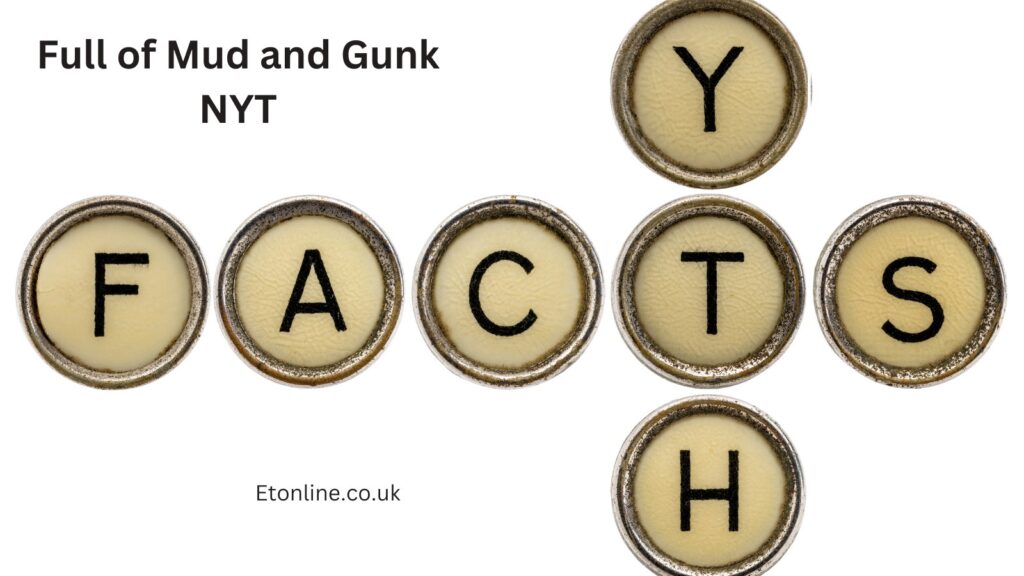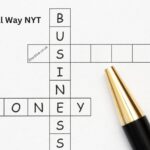Introduction To Full of Mud and Gunk NYT
In the world of product reviews, few phrases carry as much weight as ” Full of Mud and Gunk NYT ,” especially when it comes from a reputable source like the New York Times (NYT). Such descriptions can be devastating for a brand, signaling to consumers that a product is not just flawed but potentially disgusting and unusable. This article explores the implications of these harsh reviews, focusing on their impact on public perception, market success, and how brands can recover from such criticism.
Crossword puzzles offer a unique combination of challenge and entertainment, with clues that range from straightforward to perplexing. One such tricky clue in The New York Times (NYT) crossword is “Full of Mud and Gunk.” This article will help you decode this clue, providing insights into potential answers and strategies to solve it effectively.
The Full of Mud and Gunk NYT Clue
When tackling a clue like “Full of Mud and Gunk,” it’s essential to think about descriptive terms that convey a sense of dirtiness, mess, or something unclean. Crossword clues often require you to consider both literal meanings and more figurative interpretations.
Breaking Down the Clue: What Does It Mean?
The phrase “Full of Mud and Gunk” suggests something that is dirty, messy, or clogged with filth. The words “mud” and “gunk” both describe substances that are sticky, dirty, and unpleasant, so the answer is likely a word that encapsulates this idea.
Synonyms and Related Words
Some possible answers to this clue could include:
- Mucky: A term that directly refers to something dirty or covered in muck (mud).
- Muddy: This word means full of or covered with mud.
- Slimy: Often used to describe something coated with a slippery, sticky substance.
- Gunky: A colloquial term that refers to something sticky and dirty, full of gunk.
Of these, “Mucky” or “Muddy” are likely candidates, as they directly relate to the clue’s description and are commonly used in crosswords.
Why “Muddy” is a Strong Contender for the Answer
“Muddy” is a word that fits perfectly with the description “Full of Mud and Gunk” because:
- Direct Meaning: “Muddy” literally means covered in or full of mud, making it a straightforward match for the clue.
- Word Length: It’s a five-letter word, which is a typical length for NYT crossword answers.
- Common Usage: “Muddy” is frequently used in everyday language, making it a familiar and likely answer.
Other Possible Answers
While “Muddy” is a strong contender, other words might also fit, depending on the puzzle’s specifics:
- Mucky: Another five-letter word that means dirty or covered with mud.
- Gunky: A bit more informal, this term describes something full of sticky dirt or residue.
- Sludgy: A less common word, but still relevant as it describes something thick, muddy, or slushy.
Strategies for Solving the “Full of Mud and Gunk” Clue
To solve this clue efficiently, consider the following strategies:
1. Consider the Crossword’s Theme
The theme of the puzzle can provide hints. For example, if the puzzle has a nature or outdoor theme, “Muddy” or “Mucky” might be more appropriate. If the theme is more informal or playful, “Gunky” could be the answer.
2. Analyze the Word Length
Check the number of squares available for the answer. If the word length matches “Muddy” or “Mucky,” these are likely correct. Cross-reference with intersecting clues to ensure the answer fits smoothly within the puzzle.
3. Reflect on the Puzzle’s Language Style
NYT crossword puzzles often balance between formal and informal language. If the puzzle uses more everyday language, “Muddy” is a good bet. For a more playful or colloquial tone, “Gunky” might be correct.
4. Use Elimination Techniques
If you’re stuck, try filling in other clues around the “Full of Mud and Gunk” answer to see if certain letters appear. This can help you eliminate incorrect answers and zero in on the correct one.
The Role of Descriptive Clues in Crossword Puzzles
Clues like “Full of Mud and Gunk” play an essential role in making crossword puzzles engaging and challenging. These clues often require you to think creatively and consider synonyms or related concepts, enhancing your problem-solving skills.
Improving Your Vocabulary Through Crosswords
Engaging with crossword puzzles is an excellent way to expand your vocabulary. Words like “Mucky,” “Muddy,” and “Gunky” might not come up in everyday conversation, but they’re useful to know when solving puzzles. Crosswords encourage you to learn new words and understand subtle differences in meaning.
The Satisfaction of Solving Descriptive Clues
There’s a unique satisfaction in solving descriptive clues like “Full of Mud and Gunk.” These clues challenge your ability to interpret language and think about how words are used in different contexts. As you grow more experienced with crossword puzzles, you’ll find that your ability to solve these types of clues improves significantly.
Conclusion
The “Full of Mud and Gunk” NYT crossword clue is a prime example of how descriptive language can create a challenging yet rewarding puzzle experience. With “Muddy” as the most likely answer, this clue tests your ability to think critically and creatively about language. By applying the strategies outlined in this guide and continuing to practice regularly, you’ll enhance your crossword-solving skills and enjoy the satisfaction that comes with deciphering even the most perplexing clues. Remember, every puzzle you solve is a step towards becoming a more proficient and confident crossword solver.
A harsh review from the New York Times, particularly one that describes a product as “full of mud and gunk,” can have serious repercussions for a brand. Understanding the weight of such criticism, the reasons behind it, and how to respond effectively is crucial for companies looking to maintain their reputation and market position. By addressing the issues raised and turning negative press into an opportunity for improvement, brands can emerge stronger and more resilient in the face of adversity.
Also Read : Aleovera Sea Salt Organic Soap In UAE: A Natural Skincare Revolution
FAQs
What does it mean when a product is described as “full of mud and gunk” in a review?
This description suggests that the product is poorly made, dirty, or dysfunctional, making it unappealing and potentially unusable. It’s a metaphorical way to express deep dissatisfaction with the product.
How can a negative review from the NYT impact a product?
A negative review from the NYT can lead to a significant drop in sales, damage to the brand’s reputation, and in some cases, the product being pulled from the market. Consumers take such reviews seriously and are likely to avoid products that receive harsh criticism.
What should a company do if its product is negatively reviewed?
Companies should address the criticism directly, make necessary improvements, and communicate openly with consumers. By taking proactive steps, they can mitigate the damage and possibly turn the situation into an opportunity for positive change.
How does the NYT influence consumer behavior with its reviews?
The NYT is a trusted source of information, and its reviews carry significant weight. Consumers often base their purchasing decisions on these reviews, making them a powerful tool in shaping consumer behavior and market trends.
Can a product recover from a harsh review like “full of mud and gunk”?
Yes, a product can recover if the company responds effectively by addressing the issues, improving the product, and rebuilding consumer trust. Long-term resilience depends on the company’s ability to learn from the criticism and make positive changes.
Why are NYT reviews considered so influential?
The NYT is a highly respected publication with a wide readership. Its reviews are conducted by experts and are seen as unbiased and trustworthy, making them particularly influential in shaping public opinion and consumer behavior.
What is the most common answer to the “Full of Mud and Gunk” NYT crossword clue?
The most common answer is “Muddy,” which directly describes something covered with mud.
Are there alternative answers to “Full of Mud and Gunk”?
Yes, alternatives might include “Mucky,” “Gunky,” or “Sludgy,” depending on the puzzle’s theme and word length.
Why is “Muddy” a frequent crossword answer?
“Muddy” is a concise, five-letter word that directly relates to the clue’s description, making it a common and logical answer in crosswords.
How can I improve my crossword-solving skills for descriptive clues?
To improve, regularly practice crosswords, expand your vocabulary by learning new synonyms, and pay attention to the theme and tone of the puzzle.
What should I consider when solving the “Full of Mud and Gunk” clue?
Consider the length of the answer, the theme of the puzzle, and the intersecting clues to ensure your chosen word fits correctly within the puzzle.
How does solving crossword puzzles benefit cognitive function?
Crossword puzzles improve memory, enhance problem-solving skills, and promote cognitive flexibility, making them a valuable mental exercise.



